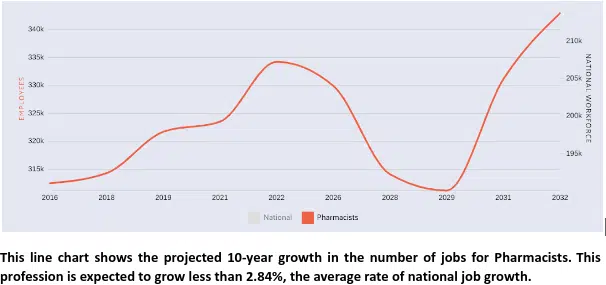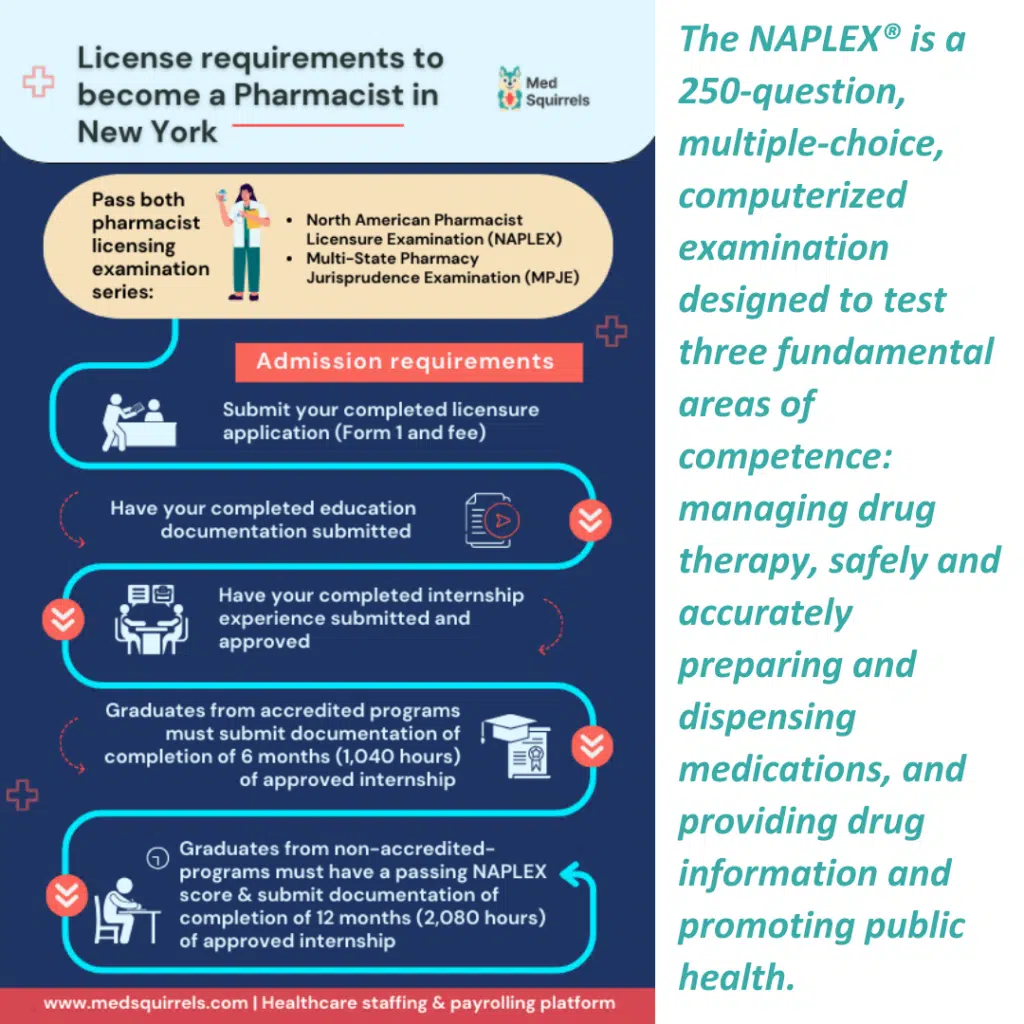How do you ensure long-term retention of pharmacists?

Pharmacists are important in the healthcare system, as they play a pivotal role in improving the quality of healthcare by ensuring the safe and effective use of medications, which also supports long-term pharmacist retention in many facilities. They not only dispense medicines but also contribute to health education, dosage optimization, and medication adherence, all of which influence overall pharmacist job satisfaction.
They are essential collaborators for patients and other healthcare professionals in the healthcare ecosystem. As pharmacists have specialized training in pharmacotherapy and drug intervention, they support physicians in optimizing the medication regimen by considering the patient’s medical history and the drug’s side effects. This reduces the risk of hospital readmissions and saves the facility money.
Thus, they help strengthen the health system by providing optimized medications, health screenings, immunizations, and chronic disease management while minimizing adverse drug events, thereby reducing the pharmacy turnover rate. Although pharmacists play a vital role in healthcare, the USA continues to face a substantial pharmacist shortage, particularly in rural and underserved areas.
According to the American Pharmacists Association, the national pharmacy turnover rate stands at 11%, underscoring the growing need for effective pharmacist retention programs (sk). However, with the aging population and prevalence of chronic diseases, there is a huge demand for pharmacists in the USA. Also, the number of pharmacists looking for a career change is increasing. According to the Centers for Disease Control and Prevention, 44.2% of health workers reported being likely or very likely to look for a new job in 2022, which influences overall pharmacist work-life balance concerns.
The US Bureau of Labor Statistics has projected that the demand for pharmacists will increase by 5%. Various factors contribute to the increasing shortage of pharmacists in the USA. In this blog, we will discuss these factors and the pharmacist retention strategies that facilities can adopt to retain pharmacists and strengthen workforce stability. For better understanding, an infographic line chart is given, which shows the projected 10-year growth in the jobs for pharmacists.
Pharmacist job projections till 2032

Source: Data USA
Factors contributing to pharmacist turnover
The U.S. continues to experience a serious pharmacist shortage, especially in rural and underserved regions. The American Pharmacists Association reports an average pharmacy turnover rate of 11%, and with the aging population and rise in chronic diseases, the demand will continue to grow. Additionally, 44.2% of healthcare workers reported being likely to seek new jobs in 2022. These shifts highlight the importance of strengthening pharmacist retention to maintain workforce stability.
Long shifts and heavy workloads:
Staff shortages often force pharmacists into extended shifts and unpredictable schedules, increasing workload and contributing to pharmacist burnout. According to the CDC, burnout among healthcare professionals has risen significantly.
Limited career advancement:
When facilities do not offer opportunities for continuing education or advancement, pharmacists may feel stagnant. This reduces growth potential and affects a pharmacist’s job satisfaction
Uncompetitive compensation:
With rising market demand, facilities must provide competitive pharmacist compensation to attract and retain skilled professionals. When compensation is not aligned with industry standards, turnover increases.
According to the BLS, the average annual pay of pharmacists is $136,030. If facilities do not offer good salary and benefits , a dissatisfied workforce leads to a higher turnover.
- Poor work culture:
Toxic work environments, lack of flexibility, and minimal support can severely impact a pharmacist work work-life balance and fuel dissatisfaction. - Geographic disparities:
Rural facilities often experience higher turnover due to lower pay and fewer amenities than those in metropolitan areas. - Regulatory challenges:
State-specific compliance requirements can also contribute to turnover if pharmacists feel overwhelmed or insufficiently supported.
To strengthen workforce stability, healthcare facilities must integrate strong pharmacist retention practices and evaluate what motivates pharmacists to remain long-term.
Strategies for enhancing pharmacists’ retention
According to the Society of Human Resource Management, turnover costs nearly one-third of an employee’s annual salary. For this reason, the most effective approach is to invest in strong pharmacist retention programs, supported by evidence-based strategies.
These measures strengthen workplace culture, reduce pharmacist burnout, and support long-term workforce stability.
- Improving scheduling practices, offering flexible shifts, and supporting initiatives that enhance pharmacist work-life balance.
- Building a supportive, inclusive work environment where pharmacists feel heard and valued.
- Collecting continuous employee feedback and acting on improvement areas related to pharmacist job satisfaction.
Support continuing education programs. You can conduct skill enhancement training, employee engagement programs, certifications, mentorship, and coaching programs to upskill them.
- Staffing adequate support staff, including pharmacy technicians, to reduce workload and prevent pharmacist burnout.
- Establishing clear career progression pathways with defined KPIs.
- Creating compensation packages that include competitive salaries, benefits, and performance incentives linked to pharmacist compensation.
- Implementing strong recognition systems to reward achievements and improve overall pharmacist retention.
Licensed pharmacist qualifications
The eligibility requirements for verifying a new pharmacist at your healthcare facility are defined by each state; for example, the New York State Education Department publishes comprehensive criteria.
Educational requirement:
Bachelor’s degree or higher from a pharmacy program accredited by the Accreditation Council for Pharmacy Education (ACPE)
Examination requirement:
Pass the North American Pharmacist Licensure Examination (NAPLEX) and Multi-State Pharmacy Jurisprudence Examination (MPJE) within 5 years
Experience Requirement:
Complete an internship under a licensed pharmacist in New York. For candidates licensed in another state, employers must verify transcripts, exam scores, and MPJE results. Ensuring compliance contributes to long-term pharmacist retention by reducing onboarding risks and improving hiring accuracy.

Source: New York State Education Department Office of the Professions
How does employer branding help attract top pharmacists?
A strong employer brand significantly boosts pharmacist retention while attracting high-quality candidates. Healthcare organizations that prioritize culture, development opportunities, and workplace transparency build trust among current and prospective staff.
Effective approaches include:
- Highlighting strong pharmacist retention programs.
- Promoting work-life balance initiatives.
- Offering competitive pharmacist compensation.
- Encouraging diversity and inclusion.
- Sharing staff testimonials, success stories, and career growth paths.
- Enhancing digital presence to communicate values and workplace experience.
Strong branding not only helps attract talent but also improves pharmacist retention by reinforcing employee satisfaction and long-term engagement.
Why traditional staffing agencies fall short in pharmacist hiring and registration
When a healthcare facility decides how to hire a pharmacist, many start by partnering with traditional staffing agencies. While these firms provide access to broader talent pools, they often rely on outdated workflows, fragmented communication, and generalized recruiters who lack insight into subspecialties such as MRI or CT imaging.
These inefficiencies slow credentialing, create mismatched profiles, and extend time-to-fill, issues that mirror challenges in the wider healthcare workforce, including trends such as a pharmacist shortage and rising clinician burnout. As staffing pressures increase across healthcare, including concerns about pharmacist burnout and declining pharmacist job satisfaction, facilities need solutions that support efficiency and reduce administrative strain.
To overcome these systemic challenges, MedSquirrels provides a modern, healthcare-specific staffing model that removes the bottlenecks common in traditional agencies. Whether you need a full-time, per diem, or contract pharmacist, our AI-enabled platform enables faster, compliant, and cost-efficient hiring. MedSquirrels offers cost-effective staffing plans to meet different operational needs. The Purple Plan supports facilities that have identified a provider but require help with credentialing, payroll, benefits, and compliance. The Orange Plan expands into full-cycle recruitment, including sourcing, screening, interview coordination, and onboarding.
For long-term roles, the Blue Plan delivers end-to-end recruitment for pharmacists and other clinical or non-clinical positions. This structured approach reduces workforce strain while promoting better scheduling balance, an issue affecting many healthcare teams, just as pharmacist work-life balance remains a growing concern. By choosing MedSquirrels, healthcare facilities avoid the limitations of traditional staffing structures and gain a streamlined path to staffing pharmacists with greater confidence, transparency, and consistency. Book a demo today to see how our staffing platform can assist while you staff!
FAQ
What are the main factors that cause pharmacist turnover?
The most common factors include heavy workloads, limited career growth opportunities, burnout, insufficient staffing, inadequate compensation, and poor workplace culture. Geographic disparities and state-specific regulatory challenges can also contribute to turnover.
How to retain pharmacists effectively?
Pharmacists stay longer when facilities offer competitive compensation, manageable workloads, opportunities for career advancement, and a supportive work culture. Implementing structured retention programs, encouraging continuing education, and prioritizing work–life balance also significantly improve long-term retention.
How can healthcare facilities improve work conditions for pharmacists?
Facilities can improve conditions by optimizing shift schedules, adding support roles like pharmacy technicians, reducing administrative burdens, encouraging open communication, and offering programs that support employee wellness.
How does MedSquirrels help facilities hire qualified pharmacists quickly?
MedSquirrels streamlines the process by matching your facility with pre-screened pharmacists who meet your clinical, regulatory, and schedule-based needs. Our platform verifies credentials and ensures you hire qualified pharmacists without delays.
Can MedSquirrels support ongoing pharmacist needs across multiple locations?
Yes. MedSquirrels is built to support multi-facility networks by maintaining an up-to-date pool of pharmacists who meet state- and facility-specific requirements. Our platform ensures consistent quality standards across all your locations
Suresh writes for MedSquirrels about healthcare staffing, career tips, and industry updates. He is passionate about helping professionals and facilities navigate hiring challenges.
